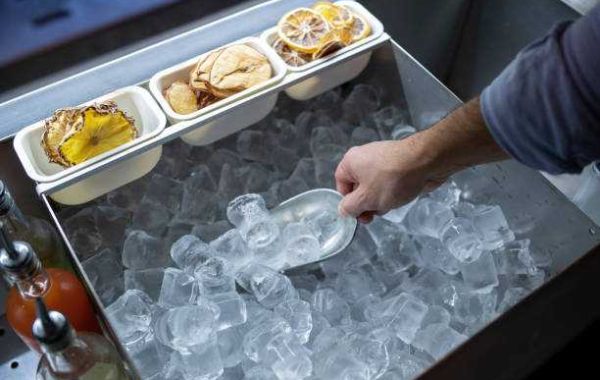Introduction
Ice makers are essential appliances for both commercial and residential settings, providing a steady supply of ice for various needs—from cooling beverages to preserving food. Whether you're outfitting a busy restaurant or enhancing your home kitchen, understanding the different types of ice makers, their features, and maintenance requirements can help you select the best model for your needs. This guide covers the types of ice makers available, key features to consider, and tips for maintenance and care.
Types of Ice Makers
Ice makers come in various styles and configurations, each suited to different applications. Here’s a breakdown of the main types:
**1. Countertop Ice Makers
- Description: These are compact, self-contained units designed to sit on countertops. They are ideal for smaller-scale ice production.
- Capacity: Typically produces small to moderate quantities of ice, suitable for home kitchens or small offices.
- Ice Types: Generally makes nugget, bullet, or cube ice.
**2. Under-Counter Ice Makers
- Description: These units are designed to fit under standard kitchen counters, combining both ice production and storage in one appliance.
- Capacity: Provides moderate ice production, suitable for small to medium-sized commercial environments or home bars.
- Ice Types: Commonly makes cubed or nugget ice.
**3. Modular Ice Makers
- Description: Modular units are large, high-capacity machines typically used in commercial settings. They produce ice in large quantities and are often paired with separate storage bins.
- Capacity: Can produce thousands of pounds of ice per day.
- Ice Types: Includes cubed, flake, or nugget ice.
**4. Portable Ice Makers
- Description: These are compact, lightweight units that can be easily moved. They are designed for occasional use and do not require permanent installation.
- Capacity: Generally produces a small amount of ice, ideal for events or temporary setups.
- Ice Types: Typically makes nugget or bullet ice.
**5. Ice and Water Dispensers
- Description: These units provide both ice and chilled water from a single machine.
- Capacity: Varies in size, suitable for offices, healthcare facilities, and public spaces.
- Ice Types: Usually makes cubed or crushed ice.
Key Features to Consider
When choosing an ice maker, consider the following features to ensure it meets your needs:
**1. Ice Type
- Cubed Ice: Versatile and used in many settings, ideal for general purposes.
- Nugget Ice: Chewable and popular in beverages; often preferred for its texture.
- Flake Ice: Soft and ideal for food display and quick cooling.
- Crushed Ice: Used in drinks and some culinary applications.
**2. Production Capacity
- Daily Output: Assess how much ice makers the machine can produce in a 24-hour period. Ensure it matches your daily requirements.
- Storage Capacity: For machines with integrated storage, check the bin size to ensure it can hold the amount of ice you need.
**3. Size and Installation
- Dimensions: Measure the space where the ice maker will be installed to ensure it fits.
- Installation: Consider whether the unit requires a direct plumbing connection or if it has a built-in reservoir.
**4. Energy Efficiency
- Energy Star® Certification: Look for models with Energy Star® certification to ensure lower energy consumption and operational costs.
- Operational Costs: Consider both the initial cost and long-term expenses, including energy and water usage.
**5. Ease of Maintenance
- Cleaning: Choose machines that are easy to clean and have accessible components.
- Servicing: Ensure the machine has good customer support and that parts are readily available.
**6. Water Source
- Direct Plumbing: Some machines require a direct water line connection.
- Built-in Reservoir: Others come with internal water reservoirs, which can be more convenient if plumbing is not available.
Maintenance and Care
Proper maintenance is crucial for ensuring the longevity and performance of your ice maker. Follow these tips:
**1. Regular Cleaning
- Schedule: Clean the machine regularly to prevent mold, mildew, and scale buildup. Follow the manufacturer’s cleaning guidelines.
- Components: Clean the ice bin, filters, and any other removable parts.
**2. Check Water Filters
- Replacement: Replace or clean water filters as recommended to ensure the quality of the ice and to prevent any issues with the machine.
**3. Inspect Components
- Maintenance Checks: Periodically inspect components like the condenser, evaporator, and other parts for wear and tear. Address any issues promptly.
**4. Monitor Ice Quality
- Quality Checks: Ensure the ice produced is clean and free from any off-flavors or odors. Poor ice quality may indicate issues with the machine or water supply.
**5. Professional Servicing
- Routine Maintenance: Schedule regular maintenance with a professional technician to keep the machine in optimal condition and to address any potential problems.
Conclusion
Choosing the right ice makers involves understanding your specific needs, whether for a high-volume commercial environment or a small home setup. By considering factors such as ice type, production capacity, size, energy efficiency, and maintenance requirements, you can select an ice maker that best suits your needs and ensures reliable performance. Proper care and maintenance will help extend the life of your ice maker and keep it running efficiently, providing a steady supply of ice whenever you need it.








